Gebefrenia is a type of schizophrenia in which patients make fun, fool around and look like children.
Infantilism is pronounced, speech, thinking, mood are unstable.
Hebephrenic schizophrenia is one of most adverse forms of this disease, as it is poorly amenable to drug therapy.
The concept and characteristics
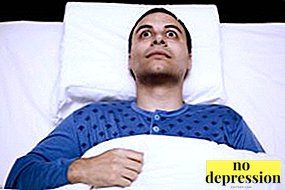
Ewald hecker He first gave a description of hebephrenia and called it a hebephraic paraphrenia, but later Emil Kraepelin, a famous German psychiatrist, referred it to schizophrenia.
The name "hebephrenic schizophrenia" is associated with the name Hebewhich is the goddess of youth in the mythology of the ancient Greeks, and it reflects well the essence of the disease.
But the disease was repeatedly renamed, so in some sources hebefrenia is called disorganized schizophrenia.
Hebephrenic syndrome is a combination of the symptoms underlying hebephrenic schizophrenia, but it is also observed in some other pathologies, such as the temporal form of epilepsy and various types of psychoses.
O. Kebrikov, a Soviet psychiatrist, identified a triad of symptoms characteristic of the hebephrenic syndrome:
- grimacing. The patient often makes faces.
- inaction of thought. The actions of the patient do not have a clear motivation, are not impulsive, are not associated with delusions or hallucinations, and are essentially meaningless. He can start jumping on the bed, grimacing, breaking something, throwing food, which is very similar to the behavior of small children.
- baseless euphoric mood. The patient is often extremely positive and cheerful, regardless of the circumstances. But in some cases, a bad mood prevails.
This disease is detected with the same frequency both sexes, but in men it is usually found in adolescence, and in women later. Gebefrenia debuts in 12-25 years.
Causes of the disease
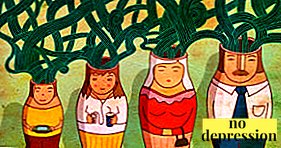 Factors affecting the development of the disease:
Factors affecting the development of the disease:
- Genetics. Mutations of some genes cause hebefrenia. A defective gene is inherited in most cases: if there were schizophrenics among close relatives, the likelihood that subsequent pathologies will develop this pathology increases several times. Also, random mutations can occur when conceiving a child.
- Adverse pregnancy and childbirth. The risk of brain damage in the fetus increases if the mother suffered one or more infectious diseases during pregnancy (measles, rubella, influenza, cytomegalovirus infection, hepatitis and others), used narcotic substances, drank alcohol in large quantities, took drugs that are contraindicated pregnant, poorly fed. Also, the likelihood of developing schizophrenia is increased in premature babies.
- Negative events in life. People who have been physically, mentally or sexually abused during different periods of their lives are more likely to develop schizophrenia and other mental illnesses.
- Addiction to alcohol or drugs. If a teenager takes narcotic substances for a long time or drinks alcoholic beverages, his brain stops functioning correctly. Most often, hallucinogenic drugs affect the development of schizophrenia.
- Personality features. Sensitive people with a rich inner world who love to dream, dream, are prone to develop schizophrenia, because they are more worried when faced with stressful situations.
Other events can also be traumatic: forced migrations, divorce of parents, death of close people, unfavorable situation in the family, separation from parents.
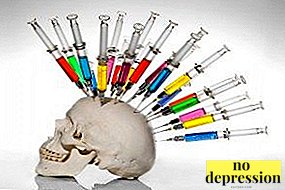
People who live in the countryside develop less schizophrenia.
Symptoms and signs
The main symptoms characteristic of hebephrenic schizophrenia:
- Grimacing and foolishness. The patient giggles, tumbles, makes faces, makes faces, jokes flatly, looks unreasonably cheerful. During a dialogue, it may behave as if it does not take it seriously: laughs, smiles. Characteristic active gestures, mannerism.
- Mood swings. Despite the fact that the mood of people with hebephrenia is predominantly positive, cheerful, euphoric, they are characterized by emotional lability.
- Immoral behavior, hypersexuality. Patients undress, showing genitals, use profanity, defecate in public and in principle ignore the need to follow the rules adopted in society. Heboids also have increased craving for masturbation, and they can satisfy themselves in the presence of other people. Attempts to stop them from behaving immorally in most cases are unsuccessful.
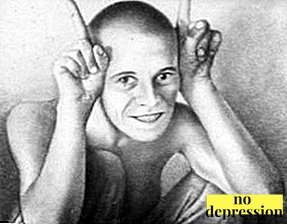 Mental abnormalities and speech disorders. The speech of patients is primitive, they often use diminutive suffixes (kitten, chicken and the like), some patients use a large number of obscene expressions in speech. During the dialogue, the patient repeats some phrases several times, and his statements may be deprived of meaning. Thinking close to children.
Mental abnormalities and speech disorders. The speech of patients is primitive, they often use diminutive suffixes (kitten, chicken and the like), some patients use a large number of obscene expressions in speech. During the dialogue, the patient repeats some phrases several times, and his statements may be deprived of meaning. Thinking close to children.- Increased appetite. At the same time, patients eat carelessly, greedily.
- Hallucinations They are episodic and have little effect on the behavior of patients. May be absent.
- Rave. Like hallucinations, it is episodic and has little effect on behavior and mood. May be paranoid, religious. Hypochondriacal complaints are common.
And a patient who, a few seconds ago, was smiling and waving his hands, can begin to behave aggressively for no reason or fall into deep sadness.
Disease flows continuously, and access to short-term remission is possible only with regular intake of medicines, selected individually. In rare cases, hebephrenic schizophrenia is uneven, and the patient has periods of remission, which are replaced by exacerbations.
Patients with hebephrenia without proper control quickly become asocial: drinking themselves, taking drugs, can be dangerous to others.
Course of hebephrenic schizophrenia
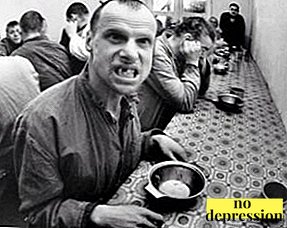 Features of the course of hebephrenia:
Features of the course of hebephrenia:
- First signs pathologies occur at the beginning of adolescence, but some abnormalities can be seen in childhood: the child is acutely responsive to stress, his intellect is usually below average, he is lazy, apathetic.
- In some cases, to make the correct diagnosis when the disease has just begun to show itself, difficult: children, especially if there is a corresponding character accentuation, are peculiar to eccentricity.
- First symptoms diseases - detachment, desire for solitude, problems with sleep, deterioration in academic performance, apathy - are often attributed to the peculiarities of adolescence. Other symptoms of hebephrenia are gradually increasing.
- Gebefrenicheskogo schizophrenia with the development can be burdened other mental disorders.
Diagnostics
In hebephrenia, symptoms are pronounced, but the main signs characteristic of schizophrenia - hallucinations, delusions, emotional detachment - are muffled or absent, so the diagnosis can be difficult.
Manifestations of hebephrenia are similar to such disorders as:
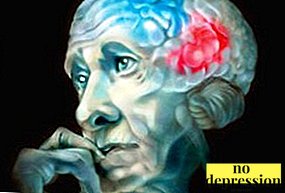 Pick's disease. The first signs of this genetic disease occur after 50 years, and hebephrenic schizophrenia develops much earlier;
Pick's disease. The first signs of this genetic disease occur after 50 years, and hebephrenic schizophrenia develops much earlier;- brain tumors. To exclude them, computed tomography and magnetic resonance imaging are shown;
- Huntington's disease. Unlike hebephrenia, hyperkinesis is observed in Huntington's disease. Also, there are no pathological changes in the brain characteristic of Huntington's disease.
For a patient who has symptoms characteristic of hebephrenic schizophrenia, observed for two to four months, and only after that the diagnosis is made.
Treatment methods
Drug treatment of hebephrenic schizophrenia ineffectivetherefore, the patient is individually selected drugs and prescribed large doses, which allows to achieve positive results and even go into remission, which usually does not last long.
The sooner the treatment of schizophrenia is started, the greater the chances that the symptoms can be controlled with the help of medicines and psychotherapy.
The main drugs used in the treatment of hebefrenia:
- Antipsychotics. They are the basis of treatment: they reduce the severity of the main symptoms, allow the patient to go into remission. Examples: Haloperidol, Clozapine, Trisedil.
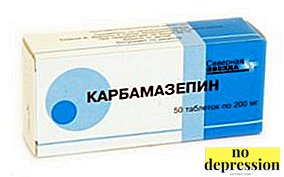 Normotimic drugs. This means stabilize mood. Examples: Carbamazepine, lithium carbonate.
Normotimic drugs. This means stabilize mood. Examples: Carbamazepine, lithium carbonate.- Nootropics Increase cognitive activity, reduce the severity of apathy, improve blood flow to the brain. Examples: Piracetam, Cinnarizine.
- Insulin. This hormone is produced by the pancreas and controls blood sugar levels. The more insulin circulates in the body, the lower the glucose concentration. Previously, schizophrenia and other mental disorders were tried to be treated by administering large amounts of insulin, after which the patient fell into a comatose or soporous state. This method of treatment is currently considered controversial, but in severe schizophrenia it can be used.
Psychotherapeutic treatment begins, if the patient is in remissionin other cases it is ineffective.
Psychotherapy helps the patient to understand his condition, learn to partially control it, activates his interest in society.
The treatment passes in the hospital. Some patients with hebephrenia may be discharged after the main part of treatment if their condition is relatively normalized, but they need to continue to regularly take medicines, visit the attending physician and return to the hospital for exacerbations.
Forecast
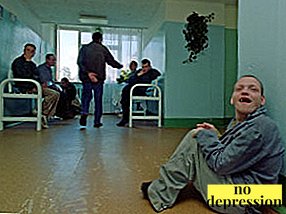
The prognosis for hebephrenic schizophrenia in most cases adverse: large doses of antipsychotics negatively affect the patient's health, and remissions in this form are unstable.
Over time, many patients develop a schizophrenic defect: pathological personality changes of an irreversible nature, characteristic of schizophrenia.
Also, much depends on when the disease was detected, on the age and personal characteristics of the patient. The younger the patient, the worse the prognosis. Most patients with this diagnosis have a second or first disability group.
For people who have noticed symptoms typical of schizophrenia in their loved ones, it is important to try to take them to the hospital as soon as possible.
The sooner treatment is started, the higher the likelihood of a favorable outcome.
You can learn about the behavior of patients with hebephrenia from the video:

 Mental abnormalities and speech disorders. The speech of patients is primitive, they often use diminutive suffixes (kitten, chicken and the like), some patients use a large number of obscene expressions in speech. During the dialogue, the patient repeats some phrases several times, and his statements may be deprived of meaning. Thinking close to children.
Mental abnormalities and speech disorders. The speech of patients is primitive, they often use diminutive suffixes (kitten, chicken and the like), some patients use a large number of obscene expressions in speech. During the dialogue, the patient repeats some phrases several times, and his statements may be deprived of meaning. Thinking close to children. Pick's disease. The first signs of this genetic disease occur after 50 years, and hebephrenic schizophrenia develops much earlier;
Pick's disease. The first signs of this genetic disease occur after 50 years, and hebephrenic schizophrenia develops much earlier; Normotimic drugs. This means stabilize mood. Examples: Carbamazepine, lithium carbonate.
Normotimic drugs. This means stabilize mood. Examples: Carbamazepine, lithium carbonate.

